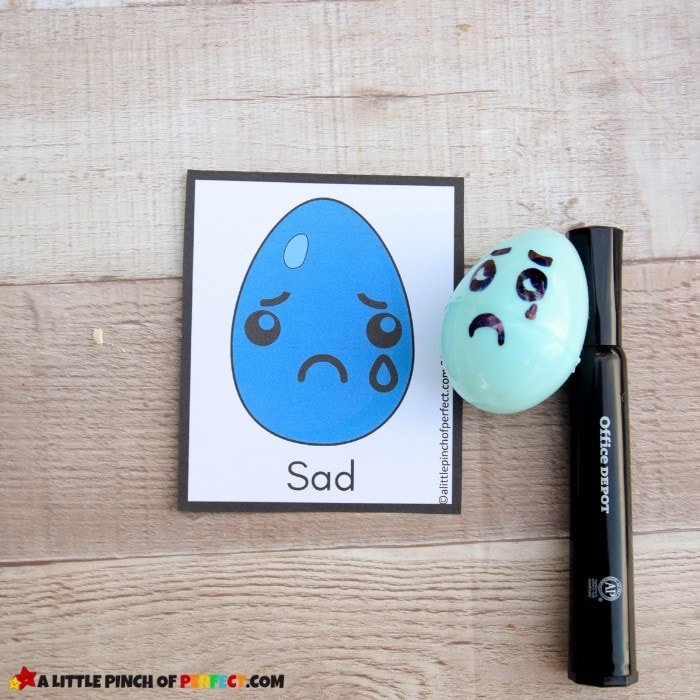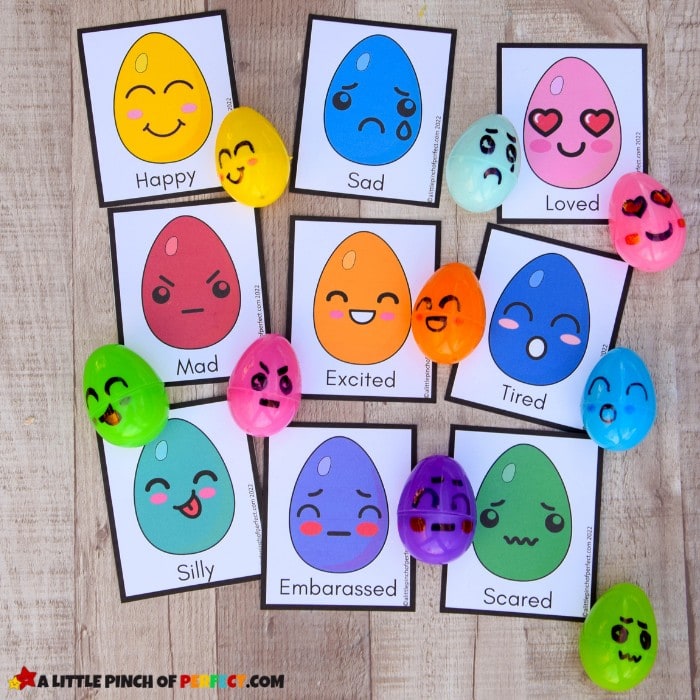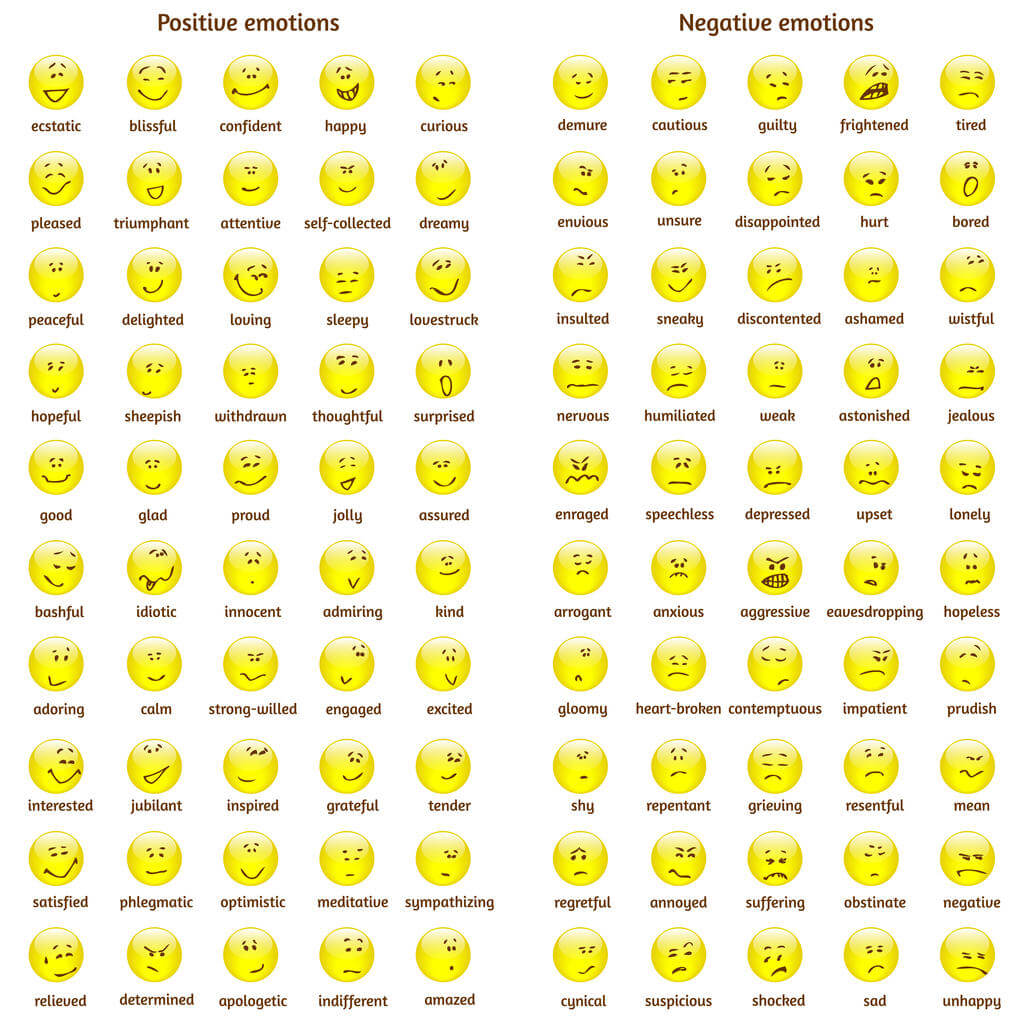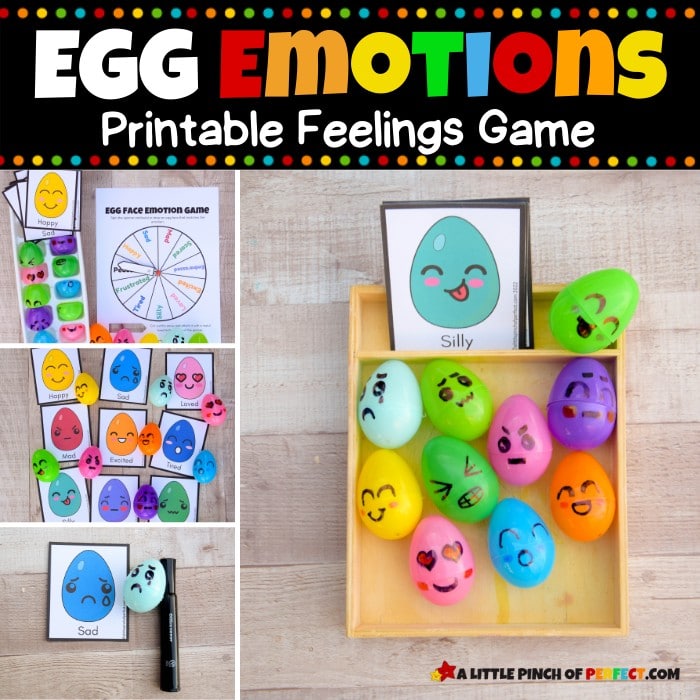Help your children learn emotions and feelings with our creative hands-on activities using plastic eggs, faces, and the printable set with BONUS ideas.
Thank you for visiting. This post may contain affiliate links to recommended products at no extra cost to you. Read our Disclosures and Terms of Use. Don't miss out again, become a Reader here <--it's FREE.
This Egg Emotion Faces activity will teach your children the names of different emotions, and how to recognize them through fun hands-on activities. The printable resources include Egg Emotion Faces, a feelings game spinner, and egg-cellent worksheets to check for understanding.
As children get older it’s important for them to grow in Emotional Intelligence. As they learn to identify their own emotions they can develop the skill of emotional regulation. They will also be able to identify the emotions of others, helping them to develop empathy, social skills, and communication skills.
Egg Emotion Faces for Kids Printable Feelings Game

How to Make Emotional Eggs
You can use the printable emotion cards as a reference to make your own emotional egg faces. Use a black and pink thick-lined permanent marker to draw faces on the plastic eggs.
Draw eyebrows and eyes on the top part of each egg and the mouth and cheeks on the lower part of the egg.
If possible, make the color of your plastic egg match the color on the card to provide students extra visual clues. This is particularly helpful for younger students who may start matching colors before they are able to match the name of emotions.
**TIP-If you want your kiddos to be able to mix and match the egg emotion faces, make sure the plastic eggs are the same size and can all fit together.

How to Teach My Child Through These Activities
Help children learn to name and recognize different emotions through facial expressions.
While teaching emotions, point out the different facial features that change like the position of the eyebrows, mouth, or other clues to look for like tears, rosy cheeks, or even the colors of the eggs.
Tip: Be careful not to label emotions as good and bad. Emotions come naturally to us according to our body and environment. Children should be taught that emotions are not “bad” to experience so they do not feel like they are being bad when they experience them. Rather, they should be taught that emotions can be positive or negative, and once we identify our emotions, we can selectively navigate our behavior. Here are some easy ideas to teach kids how to Deal with Negative Emotions at home or in your classroom.

Activities:
For your convenience, you can watch our short video tutorial of the Egg Emotions Activities.
Explore
Letting children explore the materials of an activity before giving them a lot of instructions is always a good way to start. This lets them fulfill their natural curiosity so when it’s time to listen, they can.
Often times I let my children create their own activity first, and then will gradually begin to guide them towards an intended goal.
This does not mean I let them handle the supplies roughly or destroy the activity. When needed, I will correct their behavior to ensure this activity and future activities go well. (For some reason my boys always want to throw the supplies…are my kids the only ones? Maybe they are future baseball players, lol.)

Learn the Emotions
Have children select an Egg Emotion Faces card, find the matching egg, and have them name the emotion or you can tell them the emotion. This helps children learn the names of the emotions.

Create an Emotion
Sort the tops and bottoms of the eggs into ice cube trays or bowls.
Have the children select a top and bottom to build their own egg emotion.
Little Pup (age 3) found this particularly fun and would laugh and laugh at each face he made.
Option: Take it a step further and have the child name or describe the emotion they created.
Emotion Spinner Game (Included in the Egg Emotion Printable Pack)
Sort the tops and bottoms of the eggs into ice cube trays or bowls. Have children spin the Emotion Spinner and do one or all of the following:
- Find the matching Egg Emotion Face Card (this will help children who still need to learn what the emotion can look like)
- Build the emotion using the plastic eggs
- Role play and pretend they are feeling the emotion by changing their facial expression and/or body language

Sort the Emotions:
Have students look at the different facial expressions on the egg and sort them as positive emotions (emotions that we enjoy like happiness) and negative emotions (emotions we don’t enjoy like sadness). Here is a list of positive and negative emotions from PositivePyschology.com, read more about them here. The Egg Emotion Face cards do not include all these faces, but you can make your own using the blank egg face included in the set.

More Feelings Activities with Bonus Worksheets
Egg Face
Children can draw a face on the egg to show emotion.
Option: Take it a step further and have older kids write about the emotion they created.
I Feel
Children can complete the sentence, “I feel _______________ (happy) when _____________________.” This page helps check for social-emotional learning. They can fill it out on their own, or younger children can answer the questions verbally while an adult writes their answer down.
I suggest that the answers on this page do not need to be shared among peers.
Get the Printable Here:

Don’t see the box? Click Here to be taken to the download.
Also Available on Etsy and Teachers Pay Teachers.



One comment
Comments are closed.